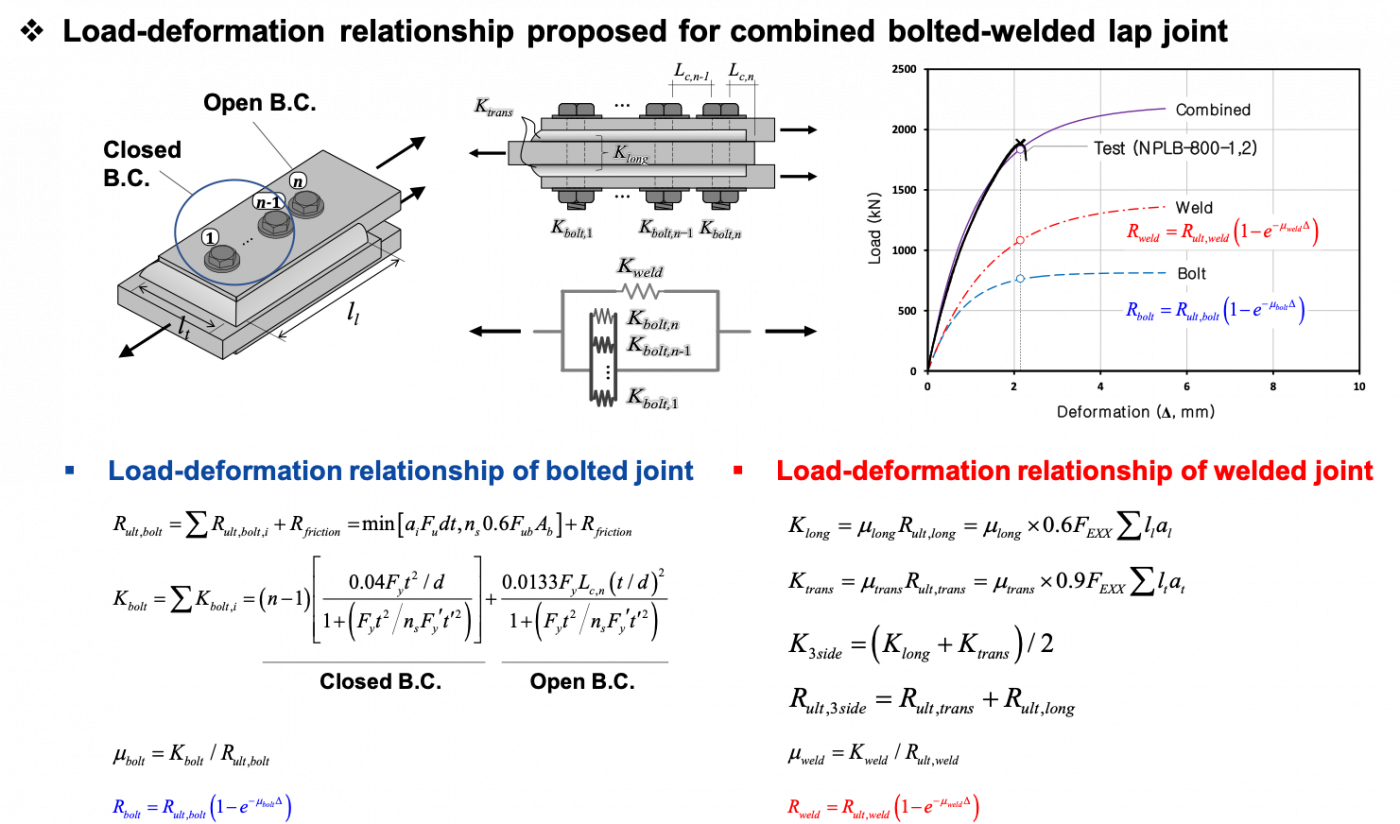볼트-용접 병용접합부의 거동과 강도
Behavior and Strength of Combined Bolted-Welded Lap Joints


강구조물에서 볼트접합은 용접접합에 비해 시공성, 경제성, 공기단축 등 여러 장점으로 현장에서 선호되는 접합방식이다. 용접접합부를 보강하기 위해 종종 용접과 동시에 볼트를 사용하는 것이 필요하다. 그러나 일반강에 비해 연성능력이 낮은 고강도강재에 대한 볼트접합과 용접접합의 병용에 대해서는 국내외적으로 연구된 바가 거의 없다. 이 연구에서는 고강도강재를 포함한 용접와 볼트를 병용한 겹침이음접합부의 거동을 확인하고 현행설계기준의 강도식 적용에 대하여 평가하였다. 이를 위해 병용접합부에 대한 새로운 강도설계식, 변형한계 및 변형적합에 기반한 하중-변형관계 모델링 방법을 제안하였다. 오랫동안 논란이 되어온 볼트와 용접의 시공순서가 거동 및 강도에 미치는 영향도 실험적으로 평가하였다. 제안된 하중-변형관계는 접합부의 강성, 강도, 용접조건 및 볼트조건 등을 반영할 수 있다. 제안된 강도설계식은 일반강뿐 아니라 고강도강 실험결과를 잘 예측하였다.
In steel construction, bolted connections offer many constructional advantages over welded connections and are preferred in the field. The use of bolting combined with welding is often required in order to supplement the welded joint. Especially, relatively little attention has been paid to the study of combined use of bolting and welding in high-strength steel applications. In this study, high-strength steel lap joints joined with both welding and bolting were tested and analyzed in order to understand the ultimate joint behavior, examine the extendability of current design recommendations and develop new strength formula if needed. To this end, load-deformation relationship of the combined welded and bolted joint was first derived based on deformation compatibility. The new formula applicable both ordinary and high-strength steels was proposed and verified using test results available. The effect of fabrication sequence between bolting and welding was also evaluated.